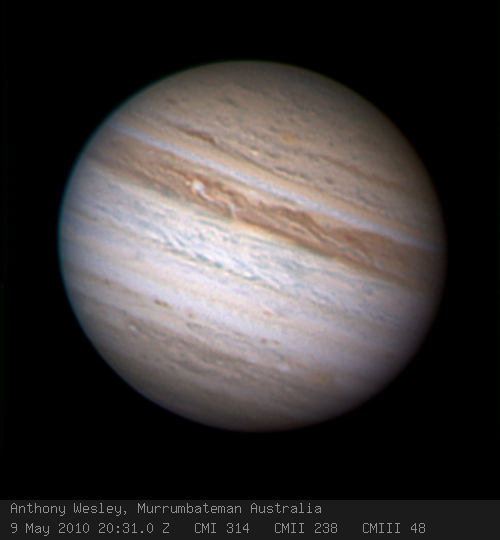will be brighter than the previous approach, in 1963 partly due to the bright clouds covering the normally dark southern equatorial belt

The planet Jupiter has always been bright, but it has been even brighter in recent months, says Robert Nye, editor of Sky and Telescope magazine. "Jupiter is currently making its closest approach to Earth, slightly closer than any other approach between 1963 and 2022.
Jupiter is now about 590 million km away, low in the southeast, after sunset. The giant planet will reach its closest point on the evening of September 20, but will remain one of the brightest objects in the night sky until the end of the month.
Why does Jupiter appear brighter than at any other time, although the change in the distance at the closest point is not as great as 16-17 million kilometers over a period of 60 years - it becomes significant as far as brightness is concerned. At best brightness it can reach minus 2.94 while at worst minus 1.6, 4 percent in distance can change XNUMX% in brightness.
In the last year, the planet Jupiter also underwent a cosmetic treatment that increased its brightness by 4% more than usual. For nearly a year, Jupiter's southern equatorial belt has been covered in tall ammonia clouds that reflect sunlight. The southern belt is usually brown, a result of the reaction of Jupiter's chemical constituents with the sun's ultraviolet light, a phenomenon known as chromophores. These chemical substances mix with the lower layer of clouds and only a few storm clouds can testify to the rise of opinion cells created from crystalline ammonia - and which mask the light-absorbing layer, and add to the light reflection.
Of course, to paraphrase the Mars hoax circulating in our altchronic mail at the end of August, the much larger Jupiter will not look like the Moon nor rival the brightness of the Moon either, but on September 22nd and 23rd it will put on a beautiful celestial show.
!

7 תגובות
What is the connection Earth will collide with Jupiter
For those who didn't catch the press release, Earth is going to collide with Jupiter.
The closest justice is with us, we will see light if we use it
Maybe we'll get some justice...
What documentation do we have about the approach of Jupiter to the Earth in 1963? Can we get more data? Thanks.
Abby, what does this mean astrologically? Does the whiteness of Jupiter's clouds indicate a wedding soon?
: )
Father do not forget,
On this date it will appear as big as the moon and as Mars at the nearest point 😉